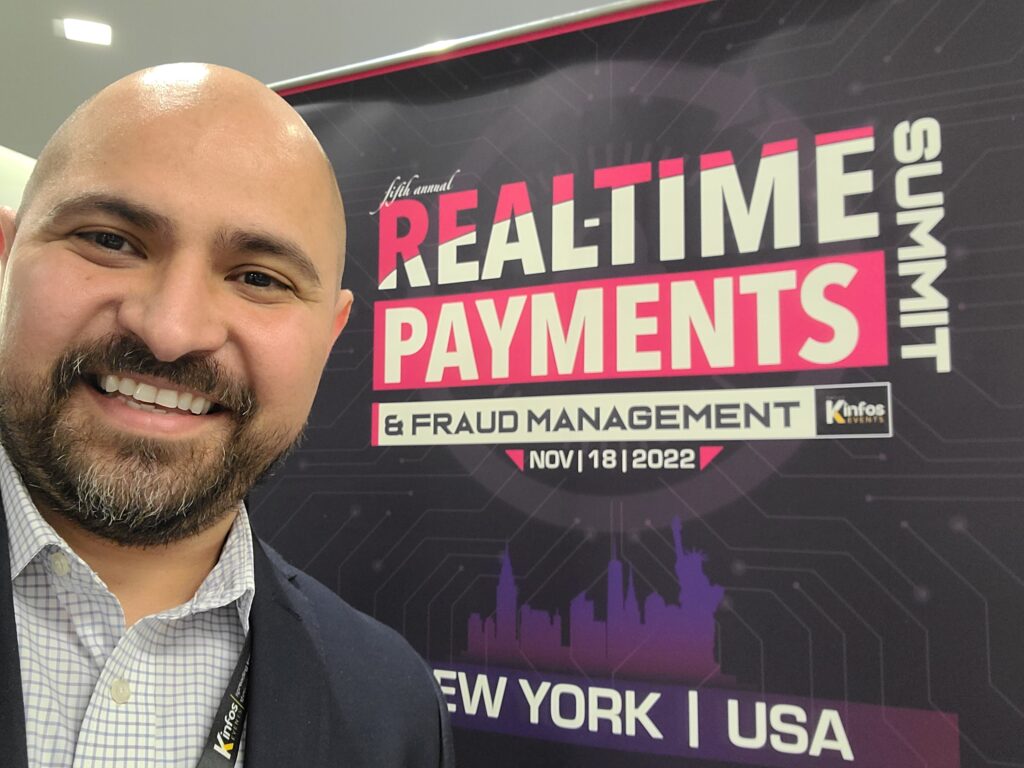Our Payments Practice recently had the opportunity to represent Perficient at the 2022 Real-time Payments & Fraud Management Summit held in New York City.
The conference was attended by several Financial Institutions, Service Providers, Fintechs, and Industry Regulators. Among its attendees were representatives from The Clearing House (TCH), The Federal Reserve Bank of Boston, and SWIFT, along with some of the largest financial institutions in the U.S.
Themes & Takeaways
Real-time payments are going mainstream.
Industry thought leaders came together to discuss the adoption of real-time payments, share lessons learned, and caution on execution challenges others may face. As we head into 2023, the international ISO 20022 data standard will serve as the backbone of various new payment services that will enable real-time payments in the U.S. These new payment rails will be offered and sponsored by The Clearing House (TCH), The Federal Reserve, and SWIFT (to mention a few).
Industry demand and use cases are maturing.
It’s easy to reach the conclusion that real-time payments are better for several reasons and understand that legacy payment systems have not been perfect. As an example, real-time payments in practical terms will accelerate how fast merchants get paid and will eliminate the waiting period for funds to settle. They will also enable employees to get paid faster. Real-time payments can also eliminate the chargeback risk for a merchant because the funds are irrevocable and delivered immediately.
2023 will bring to mainstream The Federal Reserve “FedNow” service and The Clearing House Real-time payments (RTP) Network. These services are different from NACHA’s “Same Day ACH,” or Card Network solutions. The key difference is real-time payment rails will transact and settle transactions instantly.
Plan and adapt or chase and catch up.
So, what does this mean for fintech and financial institutions? Ultimately, these services will deliver the much-desired financial and technical infrastructure needed to make real-time payments a reality in the U.S. However, the Federal Reserve and TCH are only creating a rail, and it will require additional steps to operationalize and productize the service – especially for smaller financial institutions. This is because even if the rails are built, technology will be needed to connect to the rails. An orchestration layer may also be considered to connect apps and services to send the payments over the rails: the so-called “last mile.”
Each of the new payment services will have specific use cases and features that will seek to satisfy a variety of consumer and/or corporate use cases. More importantly, the new services will enable financial institutions and fintechs to create enhanced experiences, enabling a higher level of tracking transparency while delivering real-time access to funds.
2023 will, in some ways, force real-time payments to the mainstream. Some are ready to adopt it and leverage the new capabilities to enhance existing money movement services and create new ones. Others may be fast followers and wait until plug-and-play solutions are ready for them to adopt. Regardless of your financial institution’s approach or strategy, the reality is that real-time payments are coming and most participants in the industry will be forced to engage with it, either by plan, client demand, or to reach competitive parity.





Leave A Comment